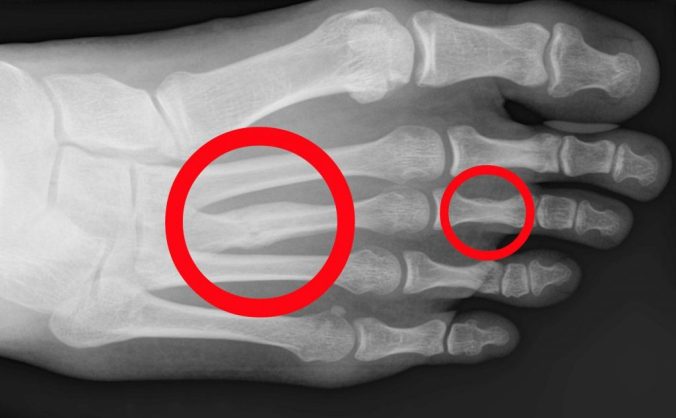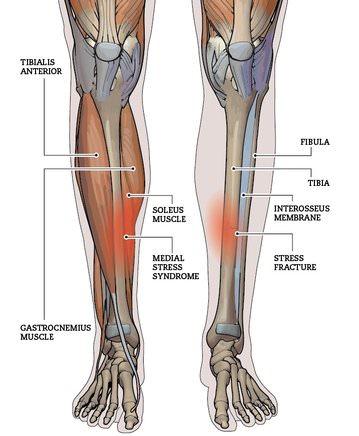Stress Fractures and Recovery For Hikers
Regrettably, stress fractures are a common occurrence among hikers, and you’re not alone in this. In this post, we’ll explore strategies to help you steer clear of stress fractures and guide you through the recovery process.
The Numbers
According to a 2017 survey of Appalachian Trail hikers, 17% dealt with shin splints, a type of stress fracture, and another 6.3% had reported a stress fracture. So why are nearly combined 23% of hikers having stress fractures? Let’s dive in!
A Bit On Bones
Bones are continually breaking themselves down and rebuilding. It’s the secret life of bones. Whatever stress you apply to the bones, the body will respond to. It will build a stronger bone if you run or hike a lot, and a thinner, weaker bone will emerge in the absence of stress. This is also known as Wolff’s Law. Remember, the body is all about resource conservation!
What Is A Stress Fracture?
Stress fractures are partial or complete breaks in the bone caused by constant stress and the poor ability to regrow new bone. They are actually microfractures of the bone, leading to inflammation of the tissue that attaches to the bone and irritation of the muscles that attach to or support the area.
For hikers, stress fractures often manifest as ‘shin splints’ or foot pain during hikes. They can be challenging to diagnose initially as they don’t always show up clearly on X-rays. However, as they begin to heal, they become more identifiable, allowing for better understanding and management.

Photo credit: http://jupiterhikes.com/tag/thru-hike/
What Causes Stress Fractures?
With a stress fracture caused while thru-hiking, the bones break down but now have a harder time regenerating due to limited/competing resources from a less nutrient-rich diet. The stress and overuse can come from many areas, including:
- Pack weight
- Uneven terrain
- Hiking too many miles too soon
- Poor nutrition
- Weak feet and lower leg muscles
- Lack of proper training
- Bad trip or fall
Indicators Of Stress Fractures
Typically, you will have some unavoidable pain, which is a late indicator that something is wrong. Don’t ignore that by just taking some ibuprofen! Pain is the predominant indicator of a stress fracture. There may also be swelling and bruising, and the area will be tender to the touch.
Expect less pain during rest and more with activity. It may start gradually and then become worse throughout the day. Also, you don’t necessarily need blunt force trauma like a trip or fall to create a fracture. Simple overuse is enough in this case.
Hikers frequently brush off pain and fight through for hundreds of more miles. You’ll tell yourself you can still walk on it, so it must not be that bad. You are making it much worse by irritating fractures and surrounding tissue, lengthening your recovery process. More on that later
Types of Stress Fractures
Medial Tibial Stress Syndrome, aka “Shin Splints”
Since shin splints is a generic term for any lower leg pain, Medial Tibial Stress Syndrome (MTSS) is a more appropriate term for stress fractures of the Tibia. The Tibia is the thicker of the two lower leg bones; the other is the Fibula.
Medial refers to the inside edge of the Tibia, and in non-scientific language, MTSS is inside lower leg stress syndrome.
Pain with MTSS will present on the mid-to-lower portion of the lower leg. You’ll be tender along the muscles that lay just to the outside of your Tibia and maybe along the back of your leg as well.
Metatarsal Fractures
The third, fourth, and fifth metatarsal bones are most often injured. Metatarsals are the longer bones in your feet, starting from the end of the arch and stopping before the smaller toe bones.
Hikers who overpronate tend to be at greater risk, as the muscles are stretched out and unable to support the bones properly. Over-the-counter orthotics like Superfeet can help support your feet and are worth the investment.
One easy way to reduce stress through the small foot bones is to take shorter strides while hiking. This will allow your body to absorb the ground reaction force better, which can lead to stress fractures. The other factor that can lead to metatarsal fractures is a lack of ankle range of motion. If the ankle is missing dorsiflexion, the body will evert the foot, leading to push-off on the outside of the foot. These smaller foot bones aren’t made for this type of force and pressure. The big toe is purpose-built for this action. Correcting your ankle range of motion can go a long way toward more efficient movement and fewer injuries.
Recovery
My experience working in physical therapy tells me that people overestimate how quickly they can return to their activity of choice. Recovery from fractures will vary depending on a few factors: how well you replenish your body with quality food before and during your hike, your age, sex, training level, overall health, and how long you kept hiking before you took action.
The physiological demands on the body skyrocket with a thru-hike, so we stress good nutrition during a hike! Having a better trail diet can really help!
The body takes a fairly predictable amount of time to remodel and repair itself, and that time frame needs to be respected. You are going to need to take time off the trail, but how long is hard to say. Typically, it is weeks.
You need time off to let the fracture heal, and not doing so will impair the healing process. If you jump back on the trail too soon and you are not fully healed, you will develop a linear fracture, eventually progressing to a displaced fracture. That means you get to wear a really neat plastic and Velcro boot for weeks or crutches to stay off of your foot while it heals!
You should return to the trial once an x-ray can confirm that the bone has healed and is stable. Even then, strength, stretching, and slow progression are the name of the game.
You will want to visit a physical therapist for more detailed stretches and a proper diagnosis, but a general rehab program will consist of the following:
- Ice for the first 24-48hrs
- Rest
- Stretching
- Strengthening
- Low-impact activity (especially for foot fractures)
Prevention
- Train more beforehand!
- Stretch and strengthen the Tibialis Anterior muscle in the front of your shin.
- Massage tender muscles to promote blood flow and healing.
- Soak feet and legs in cool running water while on the trail when possible.
- Make more informed food choices on the trail. Higher nutrient density will allow your body to recover better and keep some of these problems from ending your trip.
- Start slow and work your way up to longer miles! This is truly a marathon, not a sprint. Hiking 2000+ miles takes months.
- Drop the pack weight before you go! Remember that hikers tend to pack for their fears and use that to help determine where you can shed overpacking.
Updated 5/16/2024



Recent Comments